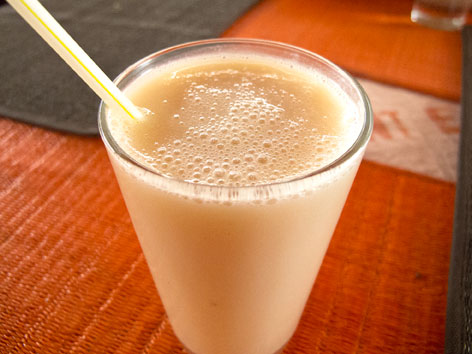Ethiopian Chicken Stew (Doro Wett)
Ethiopia
amantour

guides you to the best local dishes & drinks in
125+ cities. See map now



.jpg) Going somewhere and wish you could take all of a city’s Eat Your World info with you? With EYW’s Kindle and City Guides, you can! Don’t miss out on any local foods or drinks during your next trip.
Going somewhere and wish you could take all of a city’s Eat Your World info with you? With EYW’s Kindle and City Guides, you can! Don’t miss out on any local foods or drinks during your next trip.
EYW wants your food photos!

EYW wants your food stories!
Hey guys I am a traveler who loves to explore different places around the world. I often visit outside of Canada, So whenever I have to travel around the world I always book my flight tickets from the... Read more


What: Drinking Senegal’s local juices is truly a pleasure of being here, especially when you consider it’s a teetotal Muslim country in which soda is a special-occasion drink. There are quite a few, all made from local ingredients and all very sweet—the Senegalese do not mess around when it comes to adding sugar. The three juices you’re likely to encounter the most in Dakar are bissap (hibiscus), bouye (“bwee”; baobab fruit), and gingembre (ginger). Perhaps the most prevalent is bissap, a tart, deep red juice made from the dried flowers of the native hibiscus plant (the leaves of which are used to make the slimy green bissap sauce served alongside ceebu jën). Gingembre juice has the pungent taste of ginger—good for settling a bad stomach, likely—and cream-colored bouye is thick, sweet, and tangy, with the slightly chalky consistency of a banana shake. It was our favorite of the juices, not only for its unique taste but for being the most distinctly African of the bunch, made from the hanging, dried fruits of the great baobab tree. The fruit pulp itself is very high in vitamin C and calcium, but before you throw out your multivitamin, remember the crazy amount of sugar in this juice—probably about a 2:1 ratio of fruit to sugar.
Where: Our creamy bouye juice is from Le Pointe E (+221-33-825-1515; Rue 5/Av. Birago Diop and Rue G; map location approximate), an inviting little restaurant in the Point E neighborhood. It offers a nice selection of juices most days.
When: Mon-Fri, noon-4pm, 7pm-11pm; Sat, 7pm-11pm
Order: We tried the bouye and bissap juices (700 CFA each) here; gingembre was offered as well. The daily lunch specials change up, but we had a delicious, refined ceebu jën and dibi plate during our visit.
Alternatively: Basically any African-food establishment in Senegal will carry some juices, from the ladies who set up outside Marché Kermel (map) to nice downtown restaurants like Restaurant Le Djembe (33-82106-66; 56 Rue Docteur Theze, map).
©2025 Eat Your World, LLC - All Rights Reserved